The next-gen MacBook Pro with Retina Display Review
by Anand Lal Shimpi on June 23, 2012 4:14 AM EST- Posted in
- Mac
- Apple
- MacBook Pro
- Laptops
- Notebooks
The King of All Notebook Displays
For years Apple has been shipping some of the best displays in consumer notebooks, but the MacBook Pro’s Retina Display is in a league of its own. While I never liked the phrase “painted on” in reference to the iPad and iPhone Retina Displays, that’s the best way I can describe the effect the MacBook Pro’s Retina Display has on me. Text really does look painted on. The effect is really the result of two things.
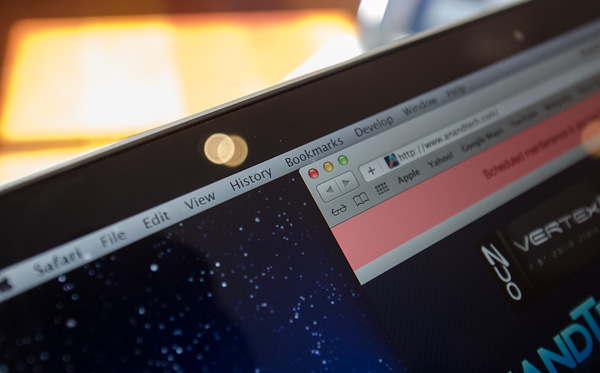
The first is Apple’s removal of its cover glass. LCD panels aren’t particularly attractive, they are ugly squares composed of two pieces of glass and a number of filters/polarizers. To hide the ugly edges, display makers wrap bezels around the display. Most people aren’t fond of bezels so next came a ton of effort to minimize bezel size. An alternative is to simply place a third piece of glass over the entire LCD assembly and make it look as if the bezel and LCD panel are integrated. This outermost layer is known as a cover glass and is what Apple uses on all of its glossy displays. If you’ve ever taken apart a Cinema/Thunderbolt Display or a newer iMac you’ll know that the cover glass is literally just a piece of glass that you have to remove with some suction cups.
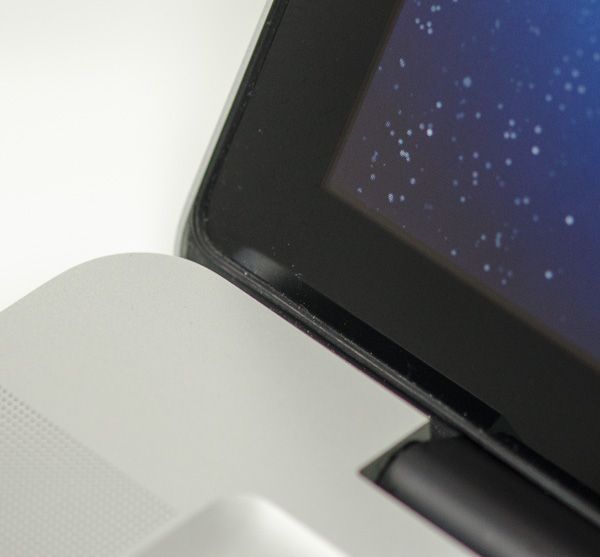
Non-Retina MacBook Pro, notice the gap between the outermost LCD glass and the cover glass
The MacBook Pro’s Retina Display does away with the cover glass and instead uses a fairly unique LCD assembly. There are still two pieces of glass but the outermost glass is actually a different size and shape - it integrates a bezel. By integrating the bezel into the outermost glass in the LCD stack you get the same effect as a cover glass but without the added reflections it introduces.
You also limit the possibility of dust getting trapped between the cover glass and the LCD. The danger is that you no longer have a protective piece of glass in front of your expensive new LCD. If you scratch the display you're scratching the LCD itself. While this has been true for conventional matte displays for a while, it's worth mentioning if you're used to Apple's glossy displays where you did have that added security layer.
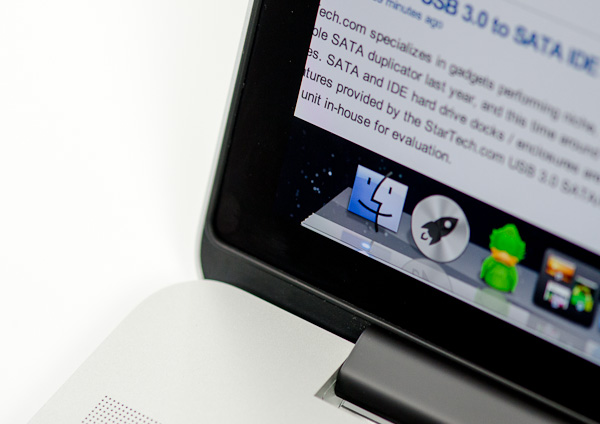
The MacBook Pro with Retina Display, no gap, no cover glass
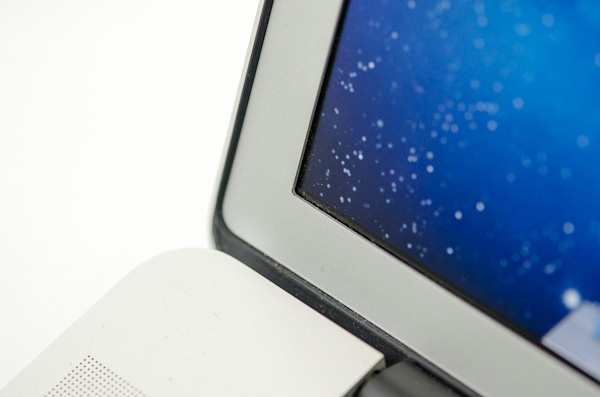
The 2011 MacBook Pro with High-Res Matte display option, no cover glass, top bezel

From left to right: 2010 High Res Glossy MBP, 2012 rMBP, 2011 High Res Matte MBP
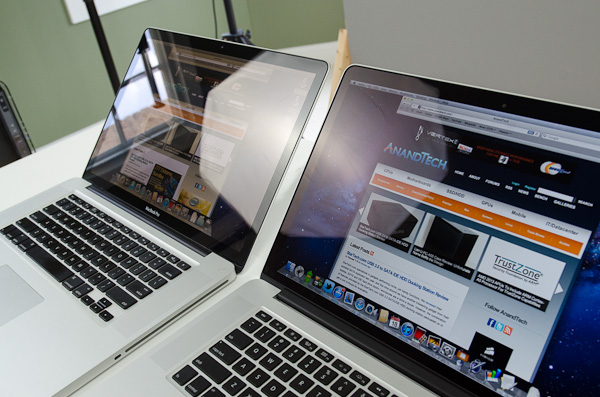
Glare handling indoors - 2011 High Res, Glossy MBP (left) vs 2012 rMBP (right)
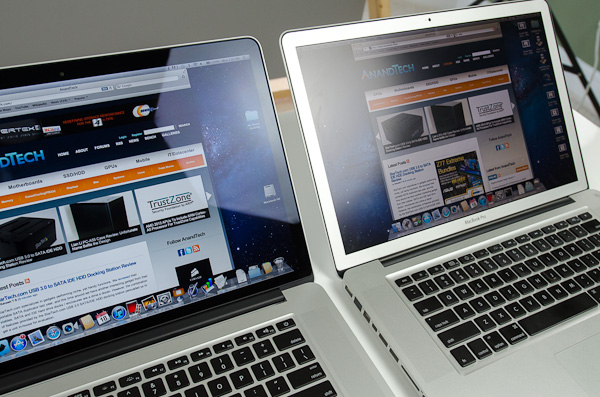
Glare handling indoors - 2012 rMBP (left) vs. 2011 High Res, Matte MBP (right)
The Retina Display is also obviously an extremely high resolution panel at 2880 x 1800. Note that this is 44.6% more pixels than Apple’s 27-inch Thunderbolt Display, and 26.6% more pixels than the 30-inch panels that we’ve loved for so long - all in a 15.4-inch notebook display.
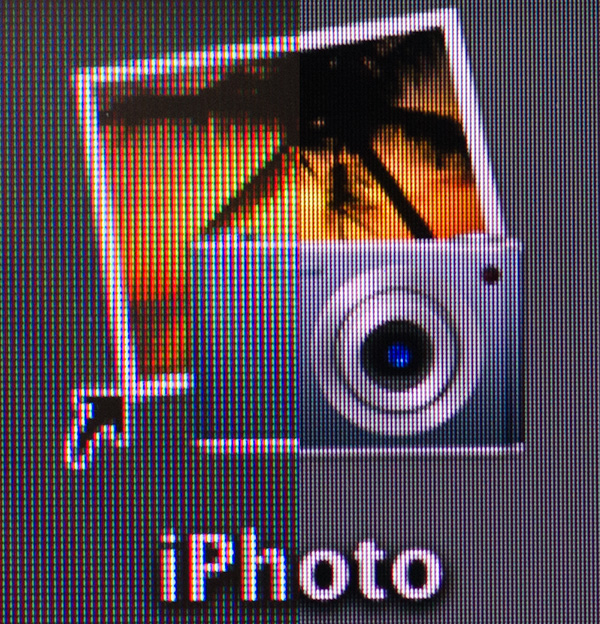
An iPhoto shortcut, High Res 2011 MBP (left) vs. Retina Display MBP (right)
At 220 pixels per inch it’s easily the highest density consumer notebook panel shipping today. At normal viewing distances and even with my face closer than I’m comfortable putting it I simply cannot discern individual pixels.
It’s the combination of these two elements, the removal of the cover glass and the insanely high pixel density that makes everything from text to UI elements just look painted on the new Retina Display. And the effect is gorgeous. I’ve never seen a prettier panel and it’s actually ruined me for pretty much all other displays, notebook and desktop.
While I can appreciate the iPad’s Retina Display, the impact from the MacBook Pro’s display is even more significant. Perhaps it’s because I still spend so much time working on a standard, non-tablet display, but I’m far more excited about this display than anything else Apple has delivered under the Retina moniker.
It’s not just pixel density that Apple has to offer here. Similar to its Retina Displays in the iPhone and iPad, the MacBook Pro’s Retina panel ditches TN in favor of IPS technology. The result is an incredible improvement in viewing angles. On a notebook I don’t spend a lot of time viewing it from far left/right angles, although I see the benefit when I’ve got others huddled around my display. Here the panel performs admirably - you lose brightness at far left/right angles but there’s no perceivable color shift. In fact, the painted on effect is even more impressive at these far left/right viewing angles.
For a single user however the more impressive characteristic is just how good the display looks at vertically off-center angles. I wrote much of the initial parts of this review while on an airplane in coach, which with a 15-inch notebook on my lap means I’m going to be looking at the display at a weird angle to begin with. The thinner rMBP doesn’t do enough to make the airplane usage model any better if the person in front of you decides to recline, but the IPS panel does make the display perfectly usable at the off-center angle you’ll inevitably have to deal with.
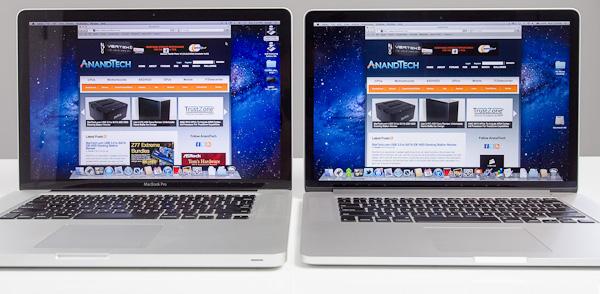
2010 High Res, Glossy MBP (left) vs. 2012 rMBP (right)
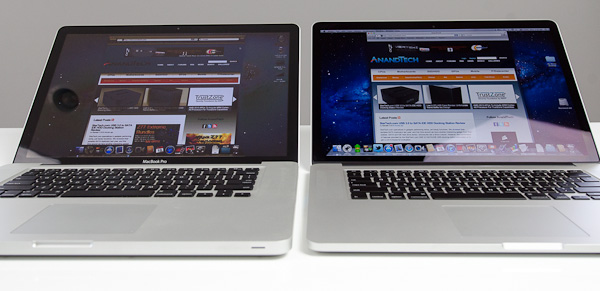
Hello colorshift!
2010 High Res, Glossy MBP (left) vs. 2012 rMBP (right)


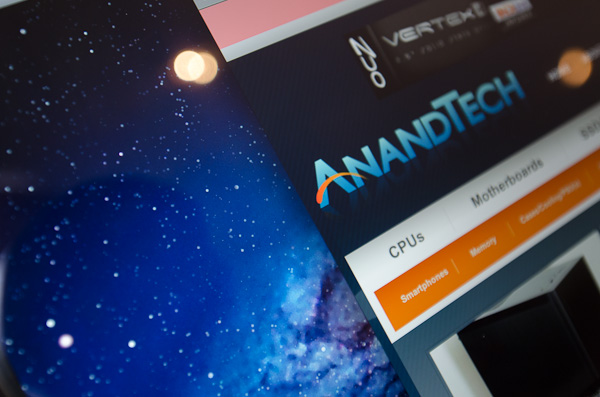
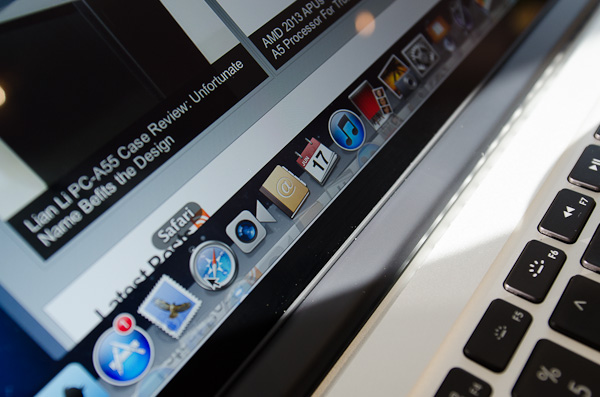
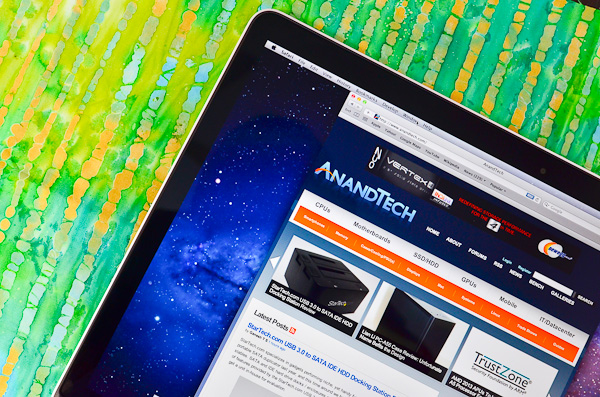
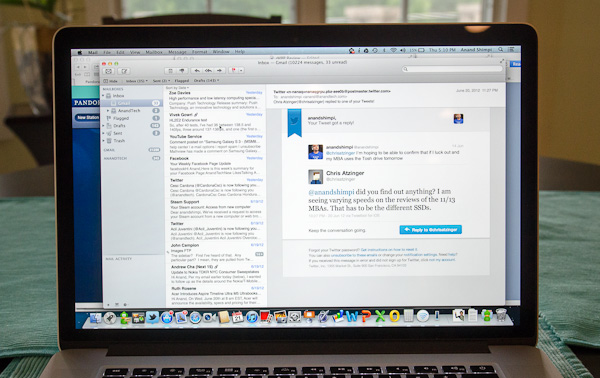
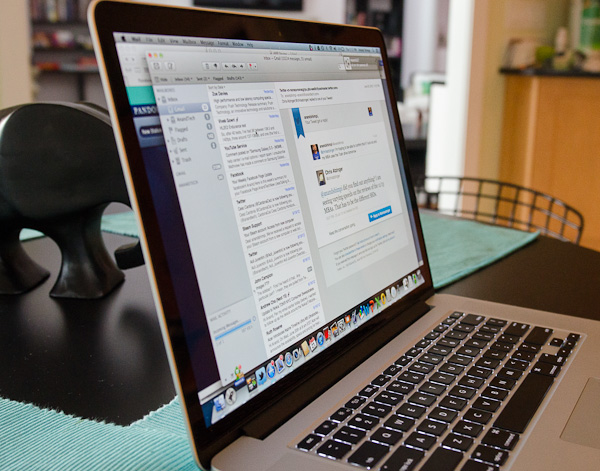








471 Comments
View All Comments
EnzoFX - Saturday, June 23, 2012 - link
Tell MS to buy them then. Can you really not see how Apple forcing this, makes others want to compete?UberApfel - Saturday, June 23, 2012 - link
You must be new to economics.ciparis - Saturday, June 23, 2012 - link
Because there were so many 2800-class displays on notebooks before Apple introduced them. Or desktop for that matter.Innovating while securing your own future production capacities, even if it means others will have a hard time copying you, is a perfectly reasonable business decision.
Taft12 - Monday, June 25, 2012 - link
Perhaps they really did buy 'em all, but anticompetitive would be preventing any more factories capable of producing high-resolution displays from coming into existence. Now *THAT* would be impressive!OCedHrt - Saturday, June 23, 2012 - link
Already exists on PC. And in 2012 Apple introduces DPI scaling? Windows had this in XP if not earlier.Akdor 1154 - Saturday, June 23, 2012 - link
yes, and it STILL isn't up to par, even with Windows 7. You can see on the shots in the review how well it performs - titlebars are too small, icons are nastily pixellated (as it can only go up to 1.5x, not a round 2x), and third party support is patchy at best. (As an aside, I would be very interested in an article on the differences on high-res drawing APIs between Windows and Mac OS. )Microsoft got there first with a half-done approach, Apple polished it.
N.B. I'm a happy Windows user, but this particular piece of tech is making me quite jealous..
internetf1fan - Saturday, June 23, 2012 - link
" (as it can only go up to 1.5x, not a round 2x)"Anand is wrong. They looked at only the preset options given by Windows which are 100%, 125% and 150%. Had they bothered to look at the other options, they would have noticed that you can easily set the custom DPI at 200% to get a x2 behavior you want. This review is seriously shoddy.
fmcjw - Saturday, June 23, 2012 - link
Yes, never seen Anand totally gushing like this. It's as if he can justify all the non-upgradeable design quirks and incompatibility with existing applications, simply by gazing at the hi-res display. I don't think many can distinguish pixels on a 13" FullHD, or even an 11" 1366x768 at normal viewing distances.In his bias and self-deception he glossed over flaws and uses the resolution as the way out of every flaw. Isn't the old matte display better than the new fancy "low-gloss" glossy display? Anand failed to look into the battery type integrated, whether it's one of the 1000-cycle packs. More unforgivably, he glossed over the low color gamut aspect, omitting a common sRGB comparison table.
Until I see a demo unit, I'll stick to the view that this is just a gimmick to lock in users by favoring proprietary, Retina-optimized applications, while 95% of applications are better off in FullHD/1920x1200 on a laptop.
This review is proof that even one of the most professional reviewers can be blinded by his own self-deception and pretty looks.
themossie - Saturday, June 23, 2012 - link
What proprietary, Retina-optimized applications? You're already running Mac OS X, it's not gonna get any more proprietary :-)The maximum selectable resolution on the MBP Retina Display -is- 1920x1200. When you select 1920x1200, it renders at 3840x2400 and downscales the image to 2880x1800.
Can easily distinguish pixels on an 11" 768p machine - I use one on a daily basis. 13" 1080p from normal viewing distance is much harder to distinguish.
damianrobertjones - Sunday, June 24, 2012 - link
"New super resolutions are coming to notebook/ laptop computers. Thanks to Apple and their forward looking business sense. Wonder when it comes to PCs..... with Windows 8?"Pointless on smaller screens.